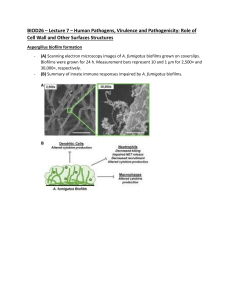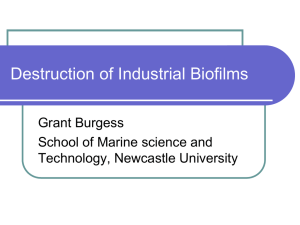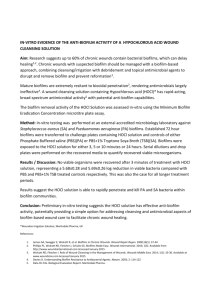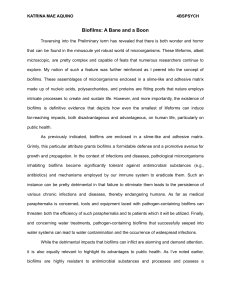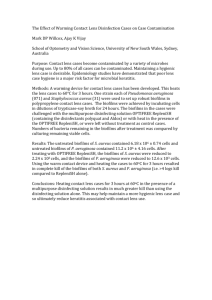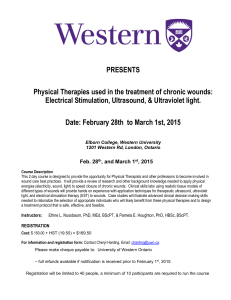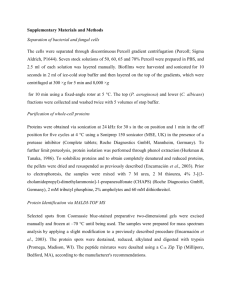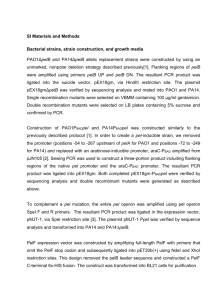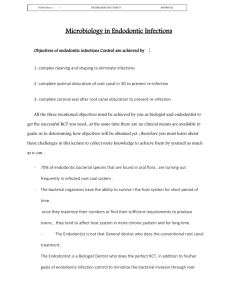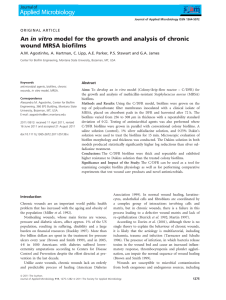A Brief Guide to Writing in the Sciences
advertisement
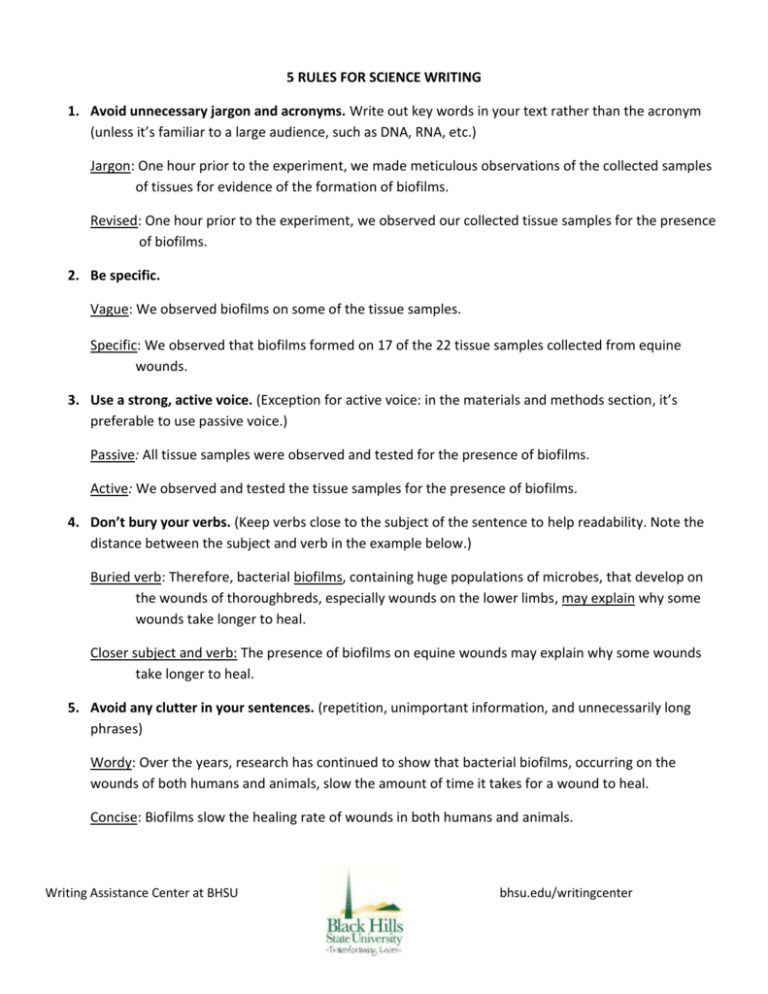
5 RULES FOR SCIENCE WRITING 1. Avoid unnecessary jargon and acronyms. Write out key words in your text rather than the acronym (unless it’s familiar to a large audience, such as DNA, RNA, etc.) Jargon: One hour prior to the experiment, we made meticulous observations of the collected samples of tissues for evidence of the formation of biofilms. Revised: One hour prior to the experiment, we observed our collected tissue samples for the presence of biofilms. 2. Be specific. Vague: We observed biofilms on some of the tissue samples. Specific: We observed that biofilms formed on 17 of the 22 tissue samples collected from equine wounds. 3. Use a strong, active voice. (Exception for active voice: in the materials and methods section, it’s preferable to use passive voice.) Passive: All tissue samples were observed and tested for the presence of biofilms. Active: We observed and tested the tissue samples for the presence of biofilms. 4. Don’t bury your verbs. (Keep verbs close to the subject of the sentence to help readability. Note the distance between the subject and verb in the example below.) Buried verb: Therefore, bacterial biofilms, containing huge populations of microbes, that develop on the wounds of thoroughbreds, especially wounds on the lower limbs, may explain why some wounds take longer to heal. Closer subject and verb: The presence of biofilms on equine wounds may explain why some wounds take longer to heal. 5. Avoid any clutter in your sentences. (repetition, unimportant information, and unnecessarily long phrases) Wordy: Over the years, research has continued to show that bacterial biofilms, occurring on the wounds of both humans and animals, slow the amount of time it takes for a wound to heal. Concise: Biofilms slow the healing rate of wounds in both humans and animals. Writing Assistance Center at BHSU bhsu.edu/writingcenter
